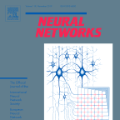Convolutional neural networks excel in a number of computer vision tasks. One of their most crucial architectural elements is the effective receptive field size, that has to be manually set to accommodate a specific task. Standard solutions involve large kernels, down/up-sampling and dilated convolutions. These require testing a variety of dilation and down/up-sampling factors and result in non-compact representations and excessive number of parameters. We address this issue by proposing a new convolution filter composed of displaced aggregation units (DAU). DAUs learn spatial displacements and adapt the receptive field sizes of individual convolution filters to a given problem, thus eliminating the need for hand-crafted modifications. DAUs provide a seamless substitution of convolutional filters in existing state-of-the-art architectures, which we demonstrate on AlexNet, ResNet50, ResNet101, DeepLab and SRN-DeblurNet. The benefits of this design are demonstrated on a variety of computer vision tasks and datasets, such as image classification (ILSVRC 2012), semantic segmentation (PASCAL VOC 2011, Cityscape) and blind image de-blurring (GOPRO). Results show that DAUs efficiently allocate parameters resulting in up to four times more compact networks at similar or better performance.
翻译:最关键的建筑要素之一是有效的可接收字段大小,这需要手工设置,以适应特定任务。标准解决方案涉及大型内核、下/上取样和放大变形,需要测试各种放大和下/上/上取样因素,并导致不相容的表述和过多参数。我们通过提议由流离失所的集合单位组成的新的组合过滤器(DAU)来解决这一问题。DAU学习空间变换,使个人变异过滤器的可接收字段大小适应特定问题,从而消除手动修改的需要。DAU提供在现有最新结构中无缝地替换变异过滤器,我们在AlexNet、ResNet50、ResNet101、DeepLab和SRN-DeblurNet上展示了这些要素。这种设计的好处表现在各种计算机变异相任务和数据集上,如图像分类(ILSVRC2012)、静态转换分解结构(PARAL-AFR),从而在2011年的连续四度图像中更好地展示了BAL-A的图像。



